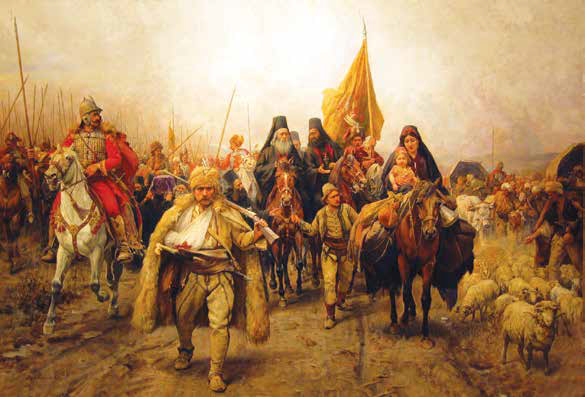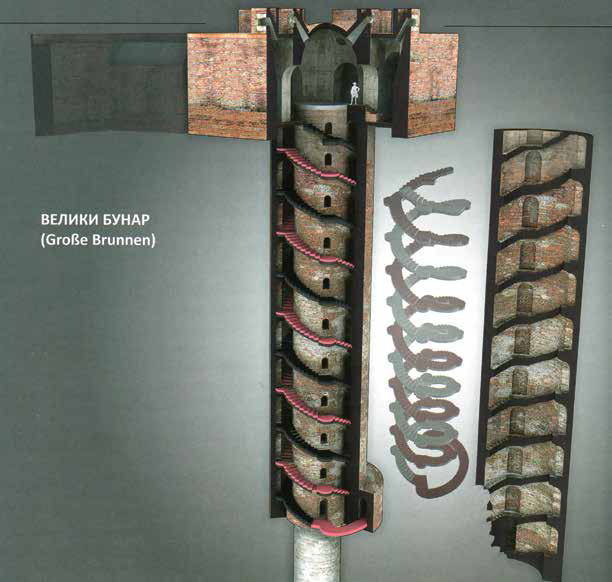Belgrade in the whirlwind of the conflict between Christianity and Islam
Throughout its history, Belgrade has experienced both the advantages and disadvantages of its exceptional and almost unique geopolitical location. In the centuries preceding the First and Second Serbian Uprisings, two empires tirelessly fought for Belgrade: the Ottoman and the Austro-Hungarian. Belgrade was what separated them. As Austria-Hungary was a predominantly Christian country, unlike the Ottomans who were Muslim, religious characteristics played a significant role in the moments when the keys to the city would be in the hands of one or the other. This is how Slavenko Terzić narrates:
„A great turning point in the political and overall life of Belgrade occurred at the end of the 17th and the first decades of the 18th century as a consequence of two great wars between the European coalition led by Austria, on the one hand, and the Ottoman Empire, on the other. During the so-called Great War of 1683–1699, which ended with the Peace of Karlovac in 1699, in 1688 Belgrade fell into the hands of the Austrian army led by Commander Maximilian Emanuel. Before that, Grand Vizier Kara Mustafa Pasha, after a long unsuccessful siege of Vienna in 1683, paid for his failure with his life in Belgrade – as ordered by Sultan Mehmed IV. After the conquest, Princes Maximilian Emanuel of Bavaria and Eugene of Savoy entered Belgrade. Since Belgrade had a prominent place in the centuries-old conflict between Christianity and Islam, the headquarters of Prince Eugene of Savoy included about forty princes from the high nobility of the Habsburg and German countries, France, Poland, and other areas. In that aristocratic community there was the representative of Russian Tsar Peter the Great, Prince Gagarin. After the further successful penetration of the Austrian army under the command of Ludwig von Baden, which marched towards Vidin, and General Piccolomini, who marched with the Serbian militia to Kosovo and Skopje, the fortunes of war soon turned in favour of the Turks under the command of Grand Vizier Mustafa Pasha Köprülü.

With the withdrawal of the Austrian army across the Sava and the Danube, in the summer of 1690, a large number of Serbs led by Patriarch Arsenije Čarnojević withdrew. This event is known in Serbian history as the Great Migration of the Serbs. Following the peace in Sremski Karlovci (Karlovac Peace) concluded on January 26, 1699, for twenty years, Belgrade, under new circumstances, became the largest Turkish city towards Austria, modelled on the lost Buda, where a large military garrison was constantly kept. The transformation of Belgrade into a large military camp meant supplying it with all its needs, which again encouraged the development of trade, led by janissaries, Greeks, and Armenians.”
In the next chapter, dealing with Austrian rule, among other things Terzić states: “During the twenty-two years of rule over Belgrade and northern Serbia, Austria sought to turn Belgrade into a centre for further spreading the Roman Catholic faith and German culture, giving it, instead of the typically oriental, a new image of a European Baroque fortified city. During the Austrian rule, Belgrade was under the jurisdiction of Emperor Charles VI and the Grand Council of War in Vienna. The city consisted of two parts: the Belgrade Fortress as a military stronghold and, outside of it, the civilian capital city of the Kingdom of Serbia.”

Uncover Belgrade's Story: Join Us for Weekly Insights and Support Our Cause
Stay tuned for weekly releases, where we’ll offer you a captivating glimpse into the rich tapestry of Belgrade’s history.
Additionally, for those eager to delve deeper into the city’s fascinating past, we invite you to contribute to our cause. By donating any amount you wish, you’ll not only support our efforts but also receive the complete eBook version of “A Brief History of Belgrade” delivered straight to your inbox.












